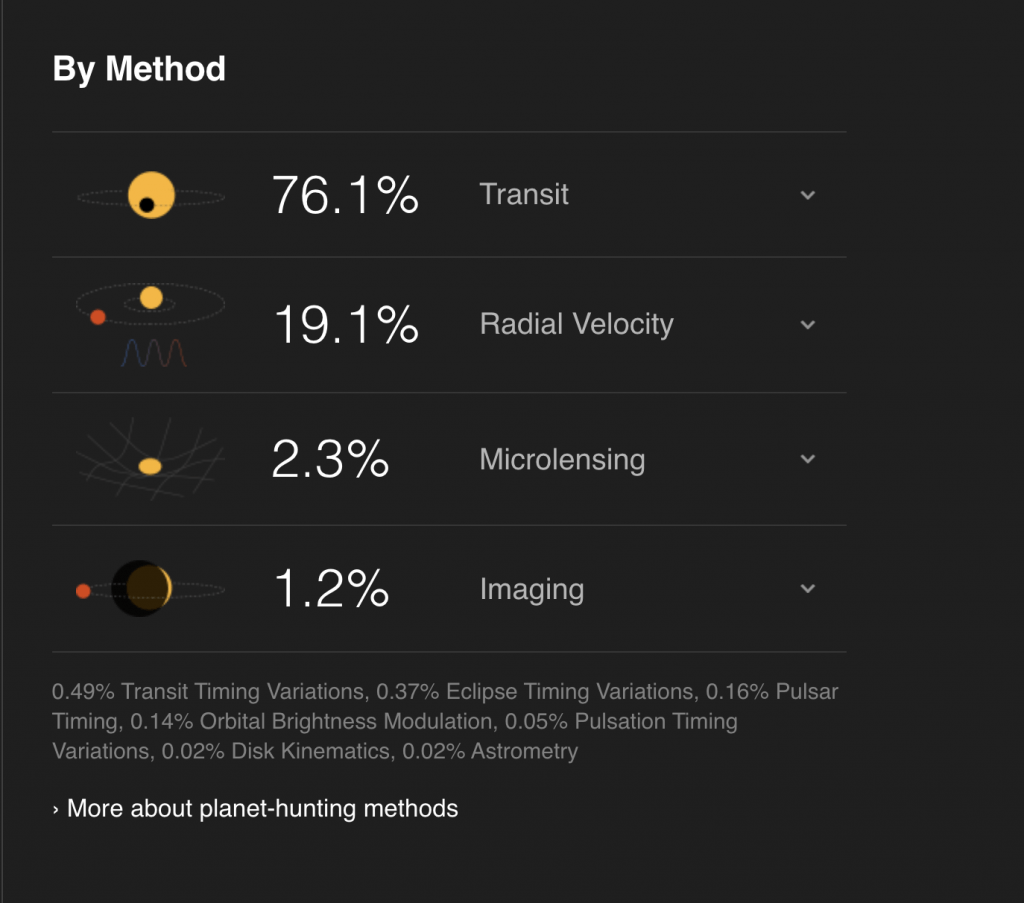Stargazing is a way to explore the Universe since ancient times, and now, we are still doing that! We stargaze through binoculars, telescopes, infrared telescopes, observatories and space telescopes. For example, Kepler space telescope and TESS, are searching planets.
Naked Eye Observations
But first, we will start from naked eye observations. We can see a lot of stars in a clear night sky without serious light pollution. The brightest are Sirius, Canopus, Alpha Centauri, Arcturus, Capella, Vega, Rigel, Betelgeuse, Achernar, etc. They are quite close to Earth, in cosmic terms. Their distance varies from a few light years to a few hundred light years. The majority of the stars visible are within 200 light years from Earth, and our eyes can see a magnitude 6 star barely in an extraordinarily clear night.
Apparent and Absolute Magnitude
We use magnitude to determine the brightness of objects seen from Earth, a magnitude 1 star is 100 times brighter than a magnitude 6 star. Sometimes magnitudes can reach negative numbers when the object is so bright, for example, the Sun has an apparent magnitude of -26.7, which is the brightest natural object in the sky. It can hurt your eyes when you look directly at it! The brightest planet, Venus has a magnitude of -4, and Sirius has a magnitude of -1.46.
The Absolute magnitude depends on the object’s luminosity or how much light it reflects. For stars, it depends on its temperature and size. For planets or satellites that mainly reflect light from a star, it depends on how much light it receives and its bond albedo, which is what percentage of light it receives reflects from it. It is also the apparent magnitude from 32.6 light years.
Apparent magnitude depends on the object’s absolute magnitude and the distance from the object. For example, The two stars visible in the Alpha Centauri system isn’t so bright even if combined, but it is extraordinarily close to Earth in stellar standards. So it is one of the ten brightest stars visible. Telescopes can detect even fainter stars, like a magnitude 8 star, and even more. Kepler space telescope detects evidence showing a planet’s existence.
Detecting an exoplanet
There are 5 main ways to detect an exoplanet, they are transit, gravitational microlensing, radial velocity, astrometry and direct imaging.
Transits occur when the objects pass directly through the star and the observer, making the star a little dimmer. Although the dimming can indicate a variable star, it can also be a planet. These stars are called planetary transit variable, which our Sun is an example because it has planets. Transits are the most successful solution to detect a planet, 75.9% of the planets are detected via transit as of August 2020.
Radial velocity detections are by planets gravitationally making a star wobble in space, therefore microscopic Doppler shifts are detected. This is a clear indication of a companion, while a planet is a sub-stellar one. Detection of planets by astrometry is caused by that too, but it is related to other stars.
Gravitational lensing occurs when an object with mass bends light around it by gravity. Planets can cause lensing too, even though it is microscopic, it is detectable.
Direct imaging of a planet is hard, but we can do that because we can filter the light from its parent star, and take a photo of it.

Credit: exoplanets.nasa.gov

